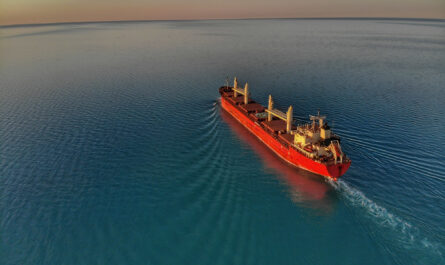
The atmospheric water generator market has been witnessing robust growth in recent years. Atmospheric water generators, also known as air-to-water machines, are devices that extract water from humid ambient air. Advancements in desiccant materials and miniaturization of components have made atmospheric water generation a viable and sustainable solution to freshwater shortage globally.
Atmospheric water generators work on the principle of condensation. They use various technologies such as cooling condensation or wet desiccation to condense humidity from air into liquid water. Advancements such as hybrid strategies leveraging both desiccant materials and thermoelectric cooling have enhanced the efficiency and lowered the energy consumption of AWGs. Small household AWGs can now deliver 5-30 liters of fresh drinking water per day, making them suitable for domestic and office use. Commercial and industrial AWGs have higher capacities of 100s of liters per day, fulfilling the non-potable water demands of various industries. They provide a decentralized approach to water sourcing without the need for existing water infrastructure.
The global Atmospheric Water Generator Market is estimated to be valued at US$ 3.08 bn in 2024 and is expected to exhibit a CAGR of 16% over the forecast period of 2024 to 2031.
Key Takeaways
– Key players in the atmospheric water generator market include WaterMicronWorld, Dew Point Manufacturing, Watair Inc., Ambient Water, Saisons Technocom Pvt. Ltd., WaterMaker India Pvt. Ltd., Planets Water, Water Technologies International, Inc., Island Sky Corporation, Fujian Yuxin Electronic Co. Ltd., Eurosport Active World Corporation Technologies, Atlantis Solar, Air2Water LLC, Konia, and Ecoloblue, Inc.
– The increasing demand for new water sources due to shortage and degradation of existing water resources presents lucrative growth opportunities. Adoption in off-grid and remote locations without existing infrastructure will drive the market.
– Advancements in desiccant materials, thermoelectric cooling technologies, and miniaturization of AWG components have improved efficiencies and lowered costs, promoting the technology further. Hybrid systems combining multiple water generation mechanisms will dominate future designs.
Market Drivers
– Fresh water scarcity due to rising population, urbanization, and impacts of climate change is a key driver. 1.2 billion people live in areas of water scarcity globally.
– Government initiatives and policies promoting decentralized water sourcing using advanced technologies are encouraging market growth. Subsidies and tax exemptions accelerate commercialization.
– Versatility of application across domestic, commercial, industrial and military use cases enhances the addressable market scope. Demand from off-grid and disaster relief expands opportunities.
Challenges in the Atmospheric Water Generator Market
The atmospheric water generator market faces some key challenges which are restricting its growth. Power consumption and cost of production are still quite high for large scale commercial and industrial use of atmospheric water generators. The technology also requires further advancements to improve efficiency and lower production costs. Variable climate and weather conditions also impact the water output from these systems. Tough regulations related to treatment of extracted water for direct consumption is another hurdle. Technological challenges include developing compact designs suitable for small space and mobile use cases. Overall reliability and build quality need consistent improvements to boost consumer acceptance.
SWOT Analysis
Strength: Renewable source of fresh water. No dependence on groundwater extraction or municipal supplies. Environment friendly technology.
Weakness: High initial investment and production costs. Variable output depending on climate conditions.
Opportunity: Growing industrial and residential demand in arid regions. Potential for integration with solar power systems. Scope for portable and mobile designs.
Threats: Regulations related to water quality standards. Competition from other desalination technologies. Dependency on humidity levels.
Geographical regions of value concentration
The Middle East and Africa region currently accounts for the largest share in terms of value in the atmospheric water generator market. Growing water stress coupled with hot and dry climate has boosted demand. Countries like Saudi Arabia, UAE, Israel, Egypt etc see significant deployment of atmospheric water generators to meet non-potable water needs of various industries.
Fastest growing geographical region
Asia Pacific region is expected to witness the fastest growth during the forecast period. Rapid urbanization and industrialization is placing immense pressure on existing water resources. Nations like India, China, Philippines, Indonesia etc are actively promoting atmospheric water generation as a supplemental water source. Government initiatives and availability of low cost labor is attracting major players to tap opportunities in the Asia Pacific atmospheric water generator market.
*Note:
- Source: Coherent Market Insights, Public sources, Desk research
- We have leveraged AI tools to mine information and compile it

